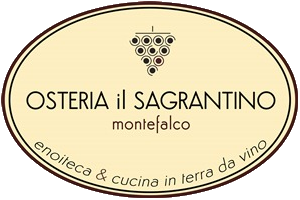Hills exposed to the south, rocky soil and a windy climate without being too cold: these are the perfect conditions for the moraiolo, the king of olives in central Italy, particularly in Tuscany and Umbria.
The west and south facing Umbrian hills, at a height of between 200 and 600 metres above sea level are literally covered with olive groves. Every year in October, the olive harvest begins, as it has done through the generations. This is the first and fundamental step in the production of what is the real and authentic “green gold” of Umbria, the extra virgin olive oil that is famous worldwide, particularly that which is produced in the areas of Trevi and Montefalco.
For practical purposes, the production of oil in Umbria is characterised by the following varieties:
Moraiolo is a relatively small tree which is distinguished by its erect upward growing branches, both the principal and fruit bearing ones. The olive itself is of medium size with a rounded shape and contains a high level of oil considered to be of top quality. It is a prolific and constant producer of fruit, characteristic with a constant quality that makes it a favourite among Umbrian oil producers. It resists the cold well and loves an elevated position which is another aspect favouring its profusion throughout Umbria.
Leccino on the other hand, has an imposing bearing with a dense foliage. It is characterised by its inclined principal and secondary branches, with plump pulpy oval shaped fruit which is, high in oil content and of an optimum quality. Its productivity is good, but perhaps less constant than the Moraiolo and it is also resistant to the cold.
Frantoio is classified as a medium size tree, but is actually a little bigger than the moraiolo and Leccino. It is characterized by its curved main branches and inclined dangling secondary branches. The fruit is generally large with an elongated oval shape, high in pulp content and an excellent quality. Its productivity is constant and it is reasonably cold resistant.
San Felice is a variety specific to the DOC areas of the Martani Mountains and it is a significant contributor to the quality of oil production. This medium size plant has a reasonable resistance to the cold, a good productivity of average size fruit and a high content of anti-oxidant properties.
Pendolino as the name indicates, typically has hanging branches and it is generally a modestly sized tree. Its fruit is particularly large with an oval, almost crescent shape, and while it has a good oil content, it is not equal to that of the Moraiolo or Frantoio. It provides a constant productivity and is very resistant to the cold. Its main function is to facilitate pollination, in particular for the Moraiolo and Frantoio varieties.
Agogia also has a reasonable development with its principal branches being vertical and the fruit bearing branches having a hanging form. The fruit is particularly big, although not as big as that of the Frantoio and it has an oval shape with a fair oil content of good quality. Its productivity is good and relatively constant and its resistance to the cold makes it adaptable to mountainous areas. Other minor varieties include Raggio, Rosciola, Canino and Maurino.
How is the olive transformed into oil?
The first aspect to take into consideration is the variety of olive to be picked, given that different varieties mature at different times of the year and certain varieties require particular conditions that favour its optimum harvest time. To achieve a good harvest for example, it is wise to wait for the colour of the fruit to change, (the so called invaiatura), when the fruit passes from green to purple. This phase indicates the maturation point in which the fruit contains the optimum quantity of oil and phenols which will later provide the organoleptic and nutritional properties to the finished product.
One final clarification is vital when dealing with olives for oil production, and it is absolutely not to be undervalued: never confuse a high quantity of oil with a maximum yield, as the yield is achieved at the moment in which the fruit dries out.
By waiting for this moment, the quality of the oil can be fully appreciated. Therefore, the best quality of oil is obtained in the arc of time in which the fruit passes from green to purple.
How are the olives picked? Let’s now discover the techniques and secrets of harvesting this precious fruit, establishing that there are two accepted processes: manual and mechanical.
MANUAL HARVESTING TECHNIQUES:
- The beating harvest
This method is the oldest, dating back to the time of myths and legends, and it involves literally “beating” the branches of the tree to make the olives fall to the ground where nets are spread to collect the fallen fruit. Obviously this technique is quite rudimentary and the risk of damaging the fruit is high. Consequently it has almost been completely abandoned as a harvest method.
- Stripping
In this manner, the fruit is hand- picked directly from the branches. Ideal for low-growing trees, it has the advantage of not damaging the olives and it is recommended for obtaining an oil of maximum quality as a result of each olive being selected by hand. In this meticulous method, ladders of various height and size are used, along with hand rakes and combs and this allows for a careful checking and selection of each olive, without stressing the branches of the tree. This technique is still used in certain areas to achieve such high results.
- Combing
As the name suggests, tools resembling combs are passed through the branches of the tree to gently detach the olives. Nets resembling upturned umbrellas are spread below the trees to collect the fruit which is then carefully selected, separating leaves and inadvertently broken branches. A negative aspect of this method is the risk of damaging the fruit with the combs and the necessity of a second phase of work of sorting and selecting.
- Gathering
In this method, the mature olives that have naturally fallen from the trees are literally collected from the ground. It is not recommended as the fallen fruit is over-ripe and does not contain a quantity of oil sufficient for production. Even more damaging is the fact that over-ripe fruit risks spoiling and being contaminated by bacteria and mould, and if these factors are not immediately removed, there is a high probability of spreading through the entire crop. This is not a method to be used in the production of high quality oil.
- Shaking
Similar to gathering, this method also fits into the mechanical harvest category as hand-held mechanical arms are used to grip the trunk and/or branches to gently shake the tree and cause the fruit to fall. This technique does not interfere greatly with the quality of the oil, thanks to the upturned umbrella shape of the arms which provides a more gently way of picking.
MECHANICAL HARVESTING TECHNIQUES:
With technological advances, it is now more common to harvest the olives using mechanical means that simulate the techniques used in hand harvesting. In recent years it has become increasingly more common to use pneumatic combs that allow for a more precise and careful harvest. Mechanical methods undoubtedly provide for an increased quantity of oil with the strength and resistance of the tools used, but it also requires greater attention during the phase of picking and selection of the fruit in order to produce an oil of high quality.
AFTER PICKING, THE OLIVES ARE TAKEN TO THE MILL FOR WEIGHING
The weighed olives are then stored in designated containers to wait for the arrival of the rest of the harvest. This is one of the critical phases in the production of the olive oil as it is vital to preserve the olives against damage from temperature spikes or mould. The next step sees the leaves removed and then the olives are washed in enormous tubs of water which are mechanically operated to keep the water in constant motion. To achieve the highest quality it is important that the water is changed often.
CRUSHING
The crushing is the first real and effective phase in the extraction of the olive oil: it is the moment in which the olives become an olive paste as they are mechanically minced into a mass composed of solids – the skin, pulp and stone of the fruit, and a liquid component – the extract of the olive. This first phase can be done in two ways: a modern crushing method in which a machine pulps the olives with a series of different sized hammers and in just a few seconds, the paste is created; the second is the traditional method used through the generations, the stone mill, in which the olives are crushed under the gentle action of an enormous circular stone which transforms them into a fruity paste. MALAXATION
In this process the olive paste is transferred to another machine where it is churned to collect and separate the liquid in droplet form, thanks to the slow movement of the mass and the heat it generates. This is a key step in olive oil production as it determines the quality, taste and quantity. In fact, the temperature to which the oil is exposed, directly affects whether or not it can be classified as “cold-pressed”, and it also changes its organoleptic properties. From 25° to 27° the oil retains a quality of excellence and earns the title of “cold-pressed”. Between 27° and 30° and above, the production increases in quantity but is of a mediocre quality as the oil has lost its fruity taste and key component of polyphenols.
EXTRACTION
The extraction is the final and real moment in which we recognise the product as olive oil and in this phase there are also various techniques available. The latest modern techniques involve the use of mechanical or hydraulic presses that separate the waste from the olive paste by manually placing layers of paste alternating with filtering discs. The traditional method uses a centrifuge, also known as a decanter, to extract the oil and while an optimum quality of oil is achieved, it has the disadvantage of using vast amounts of water.
SEPARATION
The final phase in the production of olive oil is the separation: after extracting the liquid from the paste, there is still a small amount of water remaining and this being lighter than the oil, is removed in a centrifuge which rotates at high speed, eliminating the water and leaving the pure oil.
The liquid that comes out of this machine is the finished product: extra virgin olive oil.
AT THIS POINT ALL THAT IS LEFT TO DO IS ENJOY IT: in an endless variety of Umbrian dishes or drizzle over the bruschetta “with new oil”, with a pinch of salt and a sliver of fresh garlic: the best way to taste at 100% the goodness of one of the most famous gastronomic products of Umbria. Obviously perfect as an addition to the vast selection of typical Umbrian produce (link). Fruity with an intense flavour, slightly bitter and spicy when it is first extracted, Umbrian extra virgin olive oil is without doubt, the king of condiments.
The best period for sampling this oil is definitely late autumn through to early winter, above all in November and December when the mills are open and offering tastings of their new oil: the most renowned mills for quality in the zone of Foligno-Trevi-Montefalco are Tega, Viola and Decimi. All that’s left is to try it!






